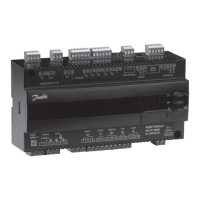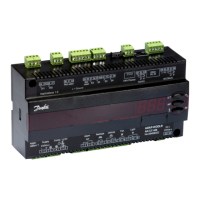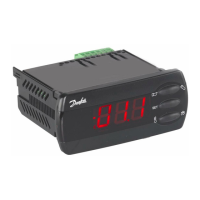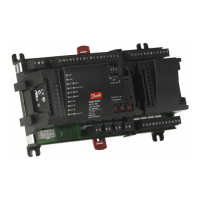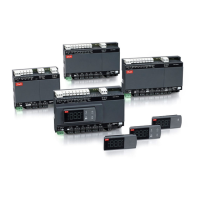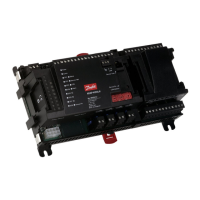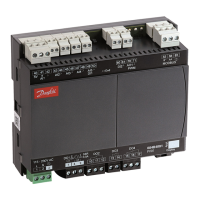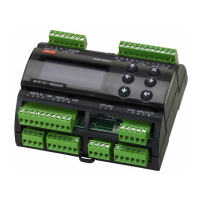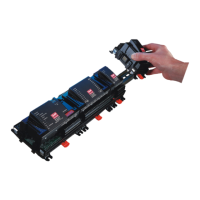4 Manual RS8FS402 © Danfoss 2016-03 AK-CC 550A
Operation
Liquid injection
Liquid injection in the evaporator is controlled by an electronic
injection valve of the type AKV. The valve functions as both expan-
sion valve and solenoid valve. The valve opens and closes using
signals from the controller.
The function contains an adaptive algorithm which independently
adjusts the valve’s opening so that the evaporator constantly sup-
plies optimum refrigeration.
Superheat can be measured via:
• Pressure sensor P0 and temperature sensor S2
For this use a correct measurement of superheat is achieved
under all conditions which ensures a very robust and precise
control.
The signal from one pressure transmitter can be used by several
controllers, but only if there is no signicant pressure dierence
between the evaporators in question.
Temperature control
The temperature in the appliance is registered by one or two
temperature sensors which are located in the air ow before the
evaporator (S3) or after the evaporator (S4) respectively. A setting
for the thermostat, alarm thermostat and display reading deter-
mines how much the two sensor values should inuence each
individual function, e.g. 50% will produce an equal value from
both sensors.
The actual temperature control can take place in two ways: as an
ordinary ON/OFF regulation with a dierential, or as a modulat-
ing control there the temperature variation will not be nearly as
great as in ON/OFF control. There is however a limit to the use of
a modulating control as it can only be used in central plant. In a
decentralised plant the thermostat function with ON/OFF control
should be selected.
In a central plant the thermostat function may either be selected
for ON/OFF control or modulating control.
Temperature monitoring
Just as is possible for the thermostat, the alarm monitoring can be
set with a weighting between S3 and S4 so that you can decide
how much the two sensor values should inuence the alarm
monitoring. Minimum and maximum limits can be set for alarm
temperature and time delays. A longer time delay can be set for
high temperature alarm. This time delay is active after defrosting,
appliance cleaning and start-up.
